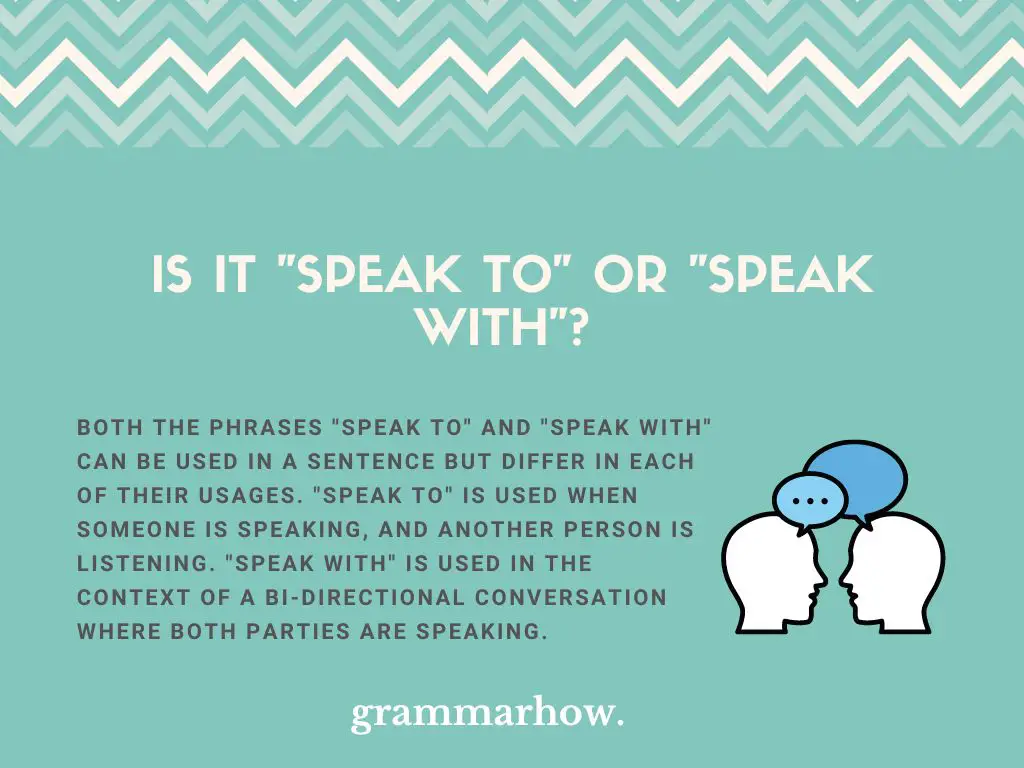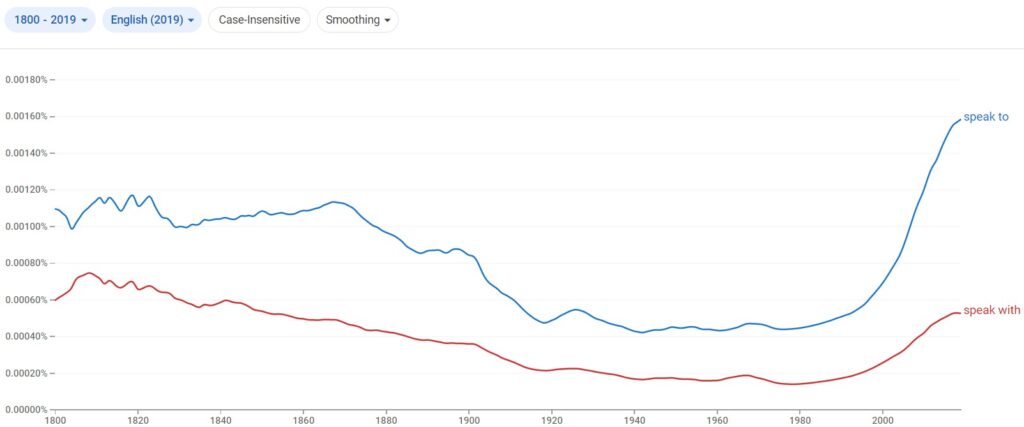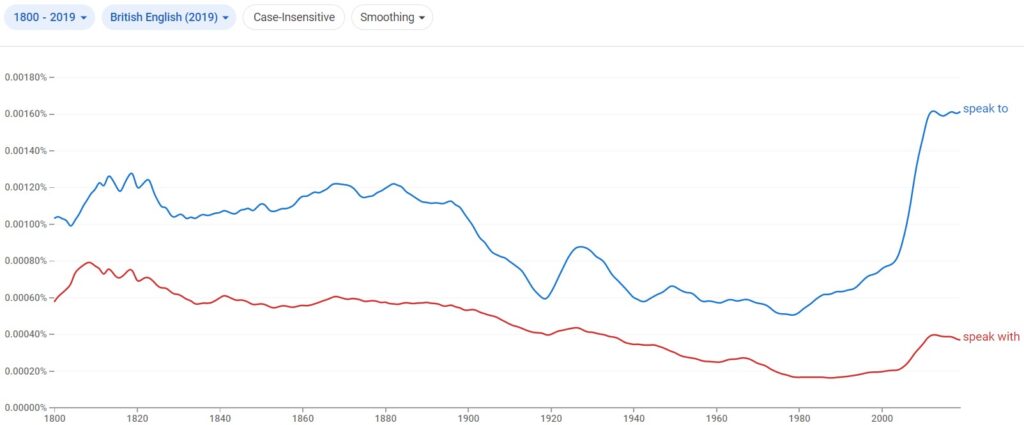The differences between “speak to” and “speak with” will be discussed in this article about prepositions. Using helpful examples and explanations, this guide will clarify the meanings of “speak to” and “speak with”.
Is It “Speak To” or “Speak With”?
Both the phrases “speak to” and “speak with” can be used in a sentence but differ in each of their usages. “Speak to” is used when someone is speaking, and another person is listening. “Speak with” is used in the context of a bi-directional conversation where both parties are speaking.

If one person is speaking and another is listening, the phrase “speak to” should be used. If both parties are speaking, the phrase “speak with” can be used.
What Does “Speak To” Mean?
“Speak to” is used when a person engages in a conversation where he or she speaks and the other party listens. This phrase is typically used to denote a one-sided conversation.
To provide you with some common instances in which the phrase “speak to” can be used, consider these examples:
- I speak to my classmates about the ideas I have for my composition.
- I speak to a large group of people in the Chess Club on a weekly basis.
- I speak to my boss about paying me on time.
- She speaks to him about the troubles she faces in her job. He politely listens and nods to show encouragement and support.
- They take their social cues from me. When I do not speak to them, they do not start a conversation either.
What Does “Speak With” Mean?
“Speak with” is used when a person engages in a bidirectional or multi-directional conversation where all the parties in the conversation speak.
To help you better understand how the phrase “speak with” can be used in a sentence, consider these examples:
- I understand the importance of speaking with them about this issue. If we do not share our opinions with one another, things can very easily go wrong.
- I speak with her about our mutual struggles in high school.
- Upon reaching home after school, I speak with my mother about her day.
- I cannot wait to speak with him about his new job.
- I speak with my teachers about how to improve my grades. They give me valuable feedback on my work and provide me with advice on how I can do better.
Are “Speak To” and “Speak With” Interchangeable?
Both the phrases “speak to” and “speak with” are interchangeable when used in a sentence. They can both describe speaking in general, but only “speak to” can be used when describing a one-directional conversation.
True enough, the phrases “speak to” and “speak with” can be used interchangeably in most situations. However, it is important to note that while both phrases can be used to describe speaking, only “speak to” can be used to describe one person speaking and the other merely listening.
Is “Speak To” or “Speak With” Used The Most?
“Speak to” is used more often than “speak with”.
As this graph taken from the Google Ngram Viewer illustrates, the phrase “speak to” is used a lot more than the phrase “speak with”. The red line depicts “speak with” and the blue line represents “speak to”.

Are “Speak To” And “Speak With” Used Differently In The UK And The US?
The phrase “speak to” is used more often than “speak with” in both the UK and the US.
As illustrated by these graphs taken from the Google Ngram Viewer (UK) and the Google Ngram Viewer (US), the phrase “speak to” is used considerably more in both the UK and the US. The red line depicts “speak with” and the blue line represents “speak to”.


While both use “speak to” more often than “speak with”, the difference in incidence between the two phrases is greater in the UK than in the US. This can be seen from how the distance between the red and blue lines is higher in the UK than in the US.
This shows that people in the UK are a lot more likely to use “speak to” over “speak with”, while people in the US are only slightly more likely to use “speak to” over “speak with”.
You may also like:
Talk With or Talk To – Correct Version (With Examples)
“Talked” or “Spoke” – Difference Explained (With Examples)
